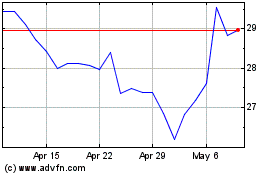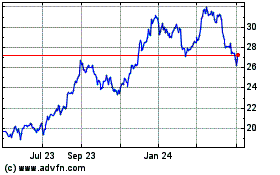• New York is the third-most expensive city in the world,
excluding rent, and the most expensive when rent is
included.
• Chicago is the seventh-most expensive city; Miami and Los
Angeles are 16th and 17th.
• New York has the fourth-highest gross wages. Miami is in
fifth, Los Angeles ninth and Chicago 10th.
• The four cities are among only seven in the world where the
average worker needs to work less than 30 hours to earn enough to
buy an iPhone 6.
Today UBS is releasing the 16th edition of its UBS Prices and
Earnings study, which examines prices, wages and earners'
purchasing power in 71 cities worldwide. The study, published
roughly every three years since 1971, compiles over 68,000 data
points reflecting economic events that have shaped the world since
the last edition in 2012.
The most expensive cities
Zurich, Geneva and New York City are the most expensive cities
in the world, according to the prices for a standardized basket of
122 goods and services. New York is the third-most expensive,
excluding rent, and rises to the top spot when rent is included.
Chicago is the seventh priciest, including and excluding rent.
Miami and Los Angeles are in 16th and 17th places, respectively,
and 11th and 13th including rent. By contrast, the cost of living
is lowest in certain Eastern European cities such as Kiev, which is
the cheapest city.
The highest wages
Workers in Zurich, Geneva and Luxembourg earn the highest gross
wages. New York earns the fourth highest. Miami is ranked fifth,
Los Angeles ninth, and Chicago 10th. After taxes and social
security contributions, Copenhagen loses 20 spots in the rankings,
due to income deductions of around 45%. In Nairobi, Jakarta and
Kiev, the lowest-ranked cities, workers receive only around 5% of
average gross earnings in Zurich.
How many hours' earnings buy a Big Mac® or an iPhone?
Wage value is best described by comparing domestic purchasing
power for goods that are as homogenous as possible worldwide.
Salaries go farthest in Luxembourg, Zurich and Geneva, where the
net hourly wage buys the most goods and services from the
standardized basket. Nairobi and Jakarta have the lowest purchasing
power, with workers there able to afford just one-tenth as much as
those in Luxembourg. New York, Los Angeles, Chicago, and Miami are
among just seven major cities globally where the average worker has
to work less than 30 hours to earn enough to buy an iPhone 6.
Shortest working hours in Paris
People work over 2,000 hours per year in 19 major cities, most
of them in Asia and the Middle East. The shortest working schedule
and highest number of days of paid vacation are enjoyed by workers
in Western Europe. Workers in Hong Kong work 1,000 more hours than
those in Paris, a difference of around four hours per working day.
Of the US cities in the study, the average worker in Chicago and
Los Angeles has the least amount of paid vacation a year at 14
days.
Impact of recent economic events
The Swiss National Bank abandoned its price floor for the euro
versus the Swiss franc in January, which had a big impact on the
indicators. Zurich and Geneva rose to the top of the rankings.
Eurozone cities plunged. Russian and Ukrainian cities plummeted due
to the Ukrainian conflict and ensuing Russian sanctions, with Kiev
now at the bottom of the price and wage charts. Instability in
South America greatly affected exchange rates, altering the
positions of cities such as São Paulo and Buenos Aires. In Asia,
the Japanese yen lost value, but the South Korean won has
appreciated versus the US dollar since 2012, meaning Tokyo now
ranks lower and Seoul higher. Asia remains the continent with the
largest variations in prices and wages among cities, while North
America is still the most uniform.
Prices and Earnings historical data now freely
available
The 2015 edition of Prices and Earnings is available on a new
microsite, www.ubs.com/pricesandearnings, which for the first time
also offers free access to all raw data from the initial report in
1971 up to the current one. Prices and Earnings is also available
as an iOS application, and in a digital UBS Newsstand version.
Links
UBS Prices and Earnings 2015:
www.ubs.com/pricesandearningsFurther information on UBS Wealth
Management's Chief Investment Office: www.ubs.com/cio
For general questions, or access to our data set, contact:
sh-prices-earnings@ubs.com
Notes to Editors
About UBS
UBS is committed to providing private, institutional and
corporate clients worldwide, as well as retail clients in
Switzerland, with superior financial advice and solutions while
generating attractive and sustainable returns for shareholders. Its
strategy centers on its Wealth Management and Wealth Management
Americas businesses and its leading universal bank in Switzerland,
complemented by its Global Asset Management business and its
Investment Bank. These businesses share three key characteristics:
they benefit from a strong competitive position in their targeted
markets, are capital-efficient, and offer a superior structural
growth and profitability outlook. UBS's strategy builds on the
strengths of all of its businesses and focuses its efforts on areas
in which it excels, while seeking to capitalize on the compelling
growth prospects in the businesses and regions in which it
operates. Capital strength is the foundation of its success.
Headquartered in Zurich, Switzerland, UBS has offices in more
than 50 countries, including all major financial centers, and
approximately 60,000 employees. UBS Group AG is the holding company
of the UBS Group. Under Swiss company law, UBS Group AG is
organized as an Aktiengesellschaft, a corporation that has issued
shares of common stock to investors. The operational structure of
the Group comprises the Corporate Center and five business
divisions: Wealth Management, Wealth Management Americas, Retail
& Corporate, Global Asset Management and the Investment
Bank.
www.ubs.com
View source
version on businesswire.com: http://www.businesswire.com/news/home/20150917005980/en/
MediaNew York:Gregg Rosenberg, +1 212-713-8842Nick Rice,
+1 212-821-2140orFollow us on Twitter: @UBSamericas
UBS (NYSE:UBS)
Historical Stock Chart
From Mar 2024 to Apr 2024

UBS (NYSE:UBS)
Historical Stock Chart
From Apr 2023 to Apr 2024
